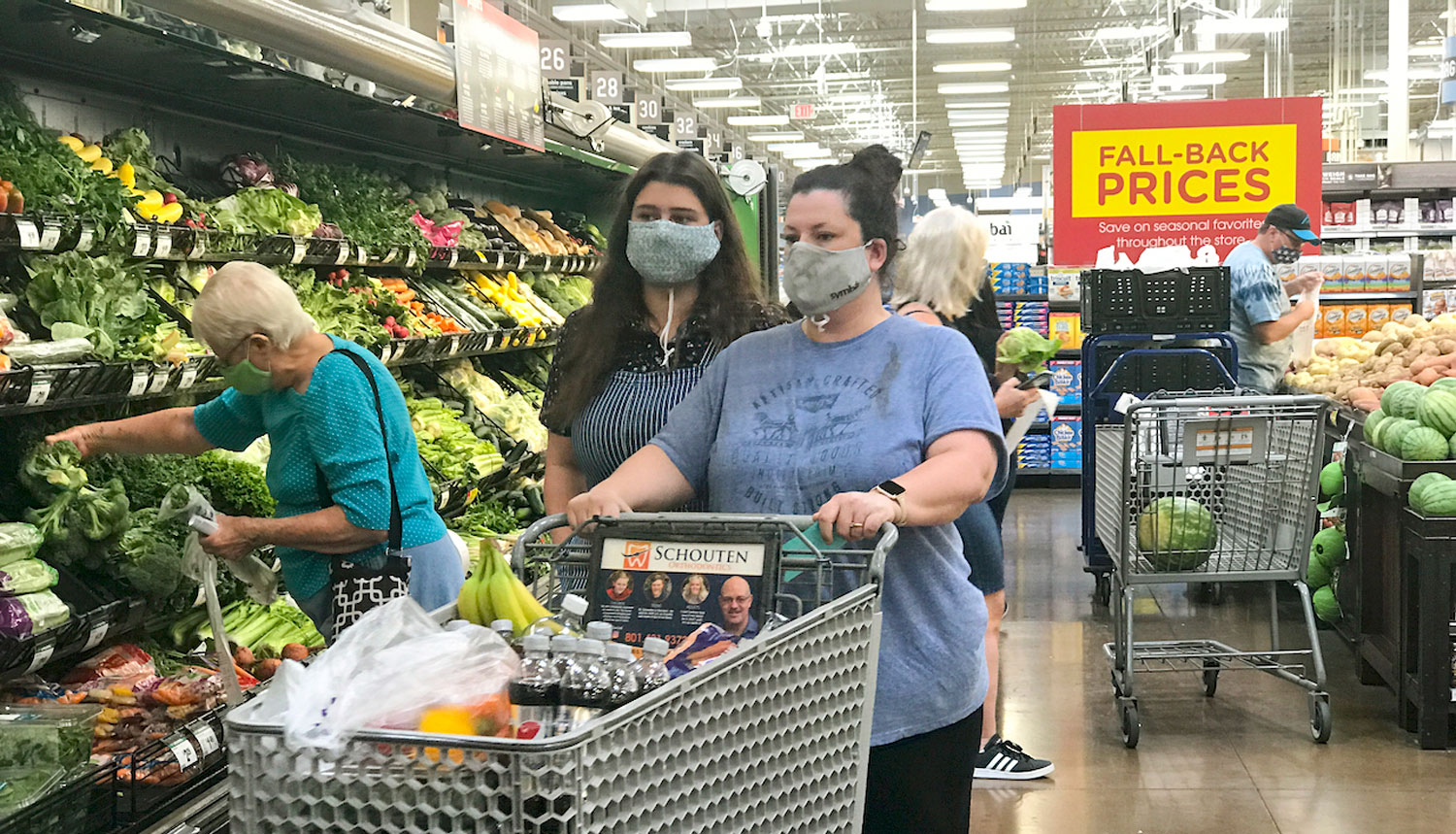How to Fight Inflation of Food Prices
Photos by Forrest Anderson
Inflation, health concerns and climate change are the top issues in the news right now, with prices up more than 6 percent this year, the pandemic surging, and catastrophic weather events.
Fortunately, one of the most effective things we as individuals can do about all three is to change the way we buy and consume food.
The Consumer Price Index report indicated that prices in November were up 6.8 percent compared with the previous year, the highest inflation rate in almost 40 years. The higher prices are mostly driven by surging demand and COVID-related bottlenecks in the supply chain, but core inflation that doesn’t include those volatile factors is also up 4.9 percent. The reasons are multiple, meaning that some level of inflation and supply uncertainty could be with us for a while.
Inflation hasn’t been at the forefront of national concerns for at least two decades, during which the annual inflation rate has been just 2-4 percent. The highest inflation periods in U.S. history were after world wars I and II and in the 1970s. The annual inflation rate throughout the 1970s averaged 6½ percent and was above 8 percent for at least three years.
In 1978, U.S. President Jimmy Carter told the American people, “Your decisions – made every day at your service station or your grocery store, in your business, in your union meetings – will determine our nation's answer to inflation as much as decisions made here at the White House or by the Congress on Capitol Hill.”
Plenty of articles have been published lately about strategies such as moving money into new investments as a hedge against inflation. But those have limited application for average people who live from paycheck to paycheck while warily watching their food bills go up.
Here are some everyday strategies to beat inflation at the grocery store. It turns out that they dovetail nicely with strategies to improve healthy eating and fight climate change.
Planning Food Purchases and Consumption
Make fighting inflation in food prices a priority and create a nerve center to do so. Companies that have created nerve centers to help them reliably acquire goods they need while keeping costs down and eliminating unnecessary waste have been surprised to realize savings substantially beyond those required to hold the line against inflation. You can do the same thing with your own food budget.
Decades of prosperity and low inflation have created a culture in which we pay others for goods and services that we could do ourselves cheaper and faster with a bit of planning. In the process, we have surrendered control over a significant chunk of our budgets, healthy food choices and the amount of food waste we produce.
For individual households, creating a nerve center to combat inflation is as simple as spending an hour or two a week planning ways to cut food costs and waste. Grocery shopping is at least 10 percent of the average household budget, so it's a key opportunity to help you fight inflation. Here are some ways to fill that hour:
- Commit not to buy food, whether at a restaurant or a store, on credit. Rising interest rates usually accompany inflation and add to increased food prices, so this is a good time to avoid buying food on credit. Instead research ways to purchase food within your budget.
- Reduce the frequency of eating out and choose less expensive restaurants and dishes when you do eat out. If you are accustomed to eating out a lot, this is the fastest way to save on your food bill.
- The best way to fight inflation is not to buy, so check your pantry, freezer and toiletries before you go shopping. Create a menu using as much as possible of what you already have, and from that, create a shopping list of fresh items to add to it. Your shopping list probably will be shorter because you took the time to check what you have, as you will avoid buying duplicates. You can keep track of how much you have and need with an inventory app. The ones we researched were too complicated for our needs, so we created our own simple iOS app, Enough Stuff. It helps you track what you own and need and it tells you when you have enough of an item so you don't overbuy. It's available at the App Store.
- Figure out how many times a week you actually eat fresh fruits and vegetables, so you avoid overbuying them. This also will reduce the chances of produce spoiling and ending up in a landfill – a point for the environment. Studies indicate that people who create menus and shopping lists and follow them also are less likely to overeat or make unhealthy choices while shopping for food.
- Have a cooking time once a week to prepare healthy snacks and meals for the week. Since we started doing this, accelerating it during the pandemic, we have cut our food bill and waste in half. We usually ate at home before the pandemic, so the cost savings for people who are accustomed to eating out a lot could be much higher. Cook dishes that can last for several days and be used in various ways. For example, enchilada sauce can be used in tacos the first day, enchiladas the second, and burritos or soup the third day. It also can be frozen for future use. Making a large pot of sauce and repurposing it on subsequent days also cuts down on cleanup time.
- You can substantially cut down on your yearly grocery bill and enjoy organic food by growing a garden in the summer and canning, pickling or freezing the surplus for use in the winter. I freeze enchilada and pasta sauces and pickle vegetables and salsa from extra garden produce in the late summer. These items save me cooking time in the winter when I pull them out to make quick meals, sandwiches and salads on busy days. Add leftover carbs, vegetables and peels to a compost bin in your backyard throughout the year to fertilize your vegetable beds in the spring.

- Take time to measure proportions at the table to save both money and calories. This is easy if you use spoons that are the approximate size of proper proportions.
- Bake your own bread. Many people started making their own bread during the pandemic using easy no-knead recipes. I quadruple my no-knead recipe and wrap extra loaves in aluminum foil, then pop them into a gallon freezer bag and into the freezer. They taste better than the bread at the best bakery in town and are a fraction of the cost. Because I only bake bread every two-three weeks, it’s easier and faster to do it than going out to buy bread. I raise and bake the loaves while working or doing other tasks.
Smart Shopping

Here's where you can really save money and beat inflation. Here are some strategies to buy what you want and need and still stay within your budget:
- Shop at discount stores for at least the basics. If you love some specialty items that are only available at more expensive stores, buy only those items at those stores.
- Beware of shopping at warehouse stores because it's easy to overspend at them. Basic pantry staples such as rice, flour, cooking oil and nuts and toiletry items such as toilet paper generally are much cheaper when purchased in large or bulk quantities at warehouse stores. However, this is not always the case, so make sure you check per unit prices when buying items. Some suppliers haven’t changed their prices, but they are selling rolls with fewer sheets, lighter bags of flour or sugar, and smaller cans of goods for the same prices as larger ones sold for. The difference can be as much as a 30 percent price increase. The best way to beat this hidden inflation is to wait for a deal and to reduce waste.
- Make sure you compare like units when checking unit pricing. This is particularly important when buying fresh produce, which can be priced by each item, by the pound or by the package. A $5 each melon can be very different in price from a $5 per pound one.

- If you only need a small amount of something or won’t use it all before it spoils, buying in bulk isn’t a good strategy. Often, if you buy more, you consume more. This is especially true of sodas and snacks. Stores know that stocking larger packages of these items can induce people to consume more. With many items, this is unhealthy for both your budget and your body.
- Buy meat on sale. Tuna, chicken breasts and lean beef cuts are on sale weekly in most locations. Stock up on your favorite cuts when they are on sale. Buy meat that is marked down for quick sale because it is close to its “sell by” date and freeze it for later use.
- When buying items on sale, make sure that they really are on sale. Some stores mark items as a deal when they actually are selling them for their regular price. Keeping a core list of staples you always use and how much they cost can help you see through this ruse and wait for real deals. Beware of lower prices on multiple buys, such as buy-one-get-one-free deals and 4 for $5 ones. Make sure that they actually provide savings and that you will use them. They may just be tricking you into buying more of a product than you need.
- Try out store, value or generic brands for items you use regularly. If you can’t tell the difference between them and branded products, keep buying the generic ones. Many store brands are half the price of branded items. When there is no difference in quality and taste, you can save hundreds of dollars per year by using less expensive brands. Then splurge on branded items that genuinely are better quality.
- Be aware of supermarket layouts and environmental factors that influence you to spend more. Stick mainly to the outside perimeter of a supermarket when shopping. That is where most of the healthy foods and basics are – dairy, meat and produce. Expensive, high calorie and processed products are in the center, so avoid them except for staples such as flour and canned goods. Healthy fruit and veggies are often placed at the front so you shop there first and don’t feel guilty about less healthy foods that you add to your basket later. Essential items such as eggs, milk and butter are far from the front door so that people have to pass displays of non-essential but promoted items to get to the basics. More expensive items are placed at eye level, with cheaper alternatives higher or lower. Popular items such as dips and chips are stocked together to get people to buy both. Playing slow music can influence the time people spend in a store and the amount of money they spend. Food smells such as rotisserie chicken cooking and bread baking can influence people to buy those items. Checkout lanes are crowded with items that encourage impulse buying.

- Cut produce costs three to four times more than uncut, so avoid most cut produce to fight inflation. Oatmeal, chips and many other products are much more expensive in individual packages, so take this into consideration when planning your needs and weigh the cost against the time it would take you to break them down into individual portions. I’m not saying don’t use individually packaged items, because some are extremely convenient and help with portion control if you are trying to lose weight. However, buying items in larger packages can be a way to save significant amounts of money as well as to cut down on packaging waste.
- If you can’t grow a garden, save money on produce by ordering produce direct from a producer. Almost a third of food grown in the U.S. never gets harvested because it doesn’t meet the appearance standards of a traditional grocery store. If you are good with using misshapen fresh produce, you can save 40 percent over supermarket prices in this way.
- Buy food in season to get the best price and quality.
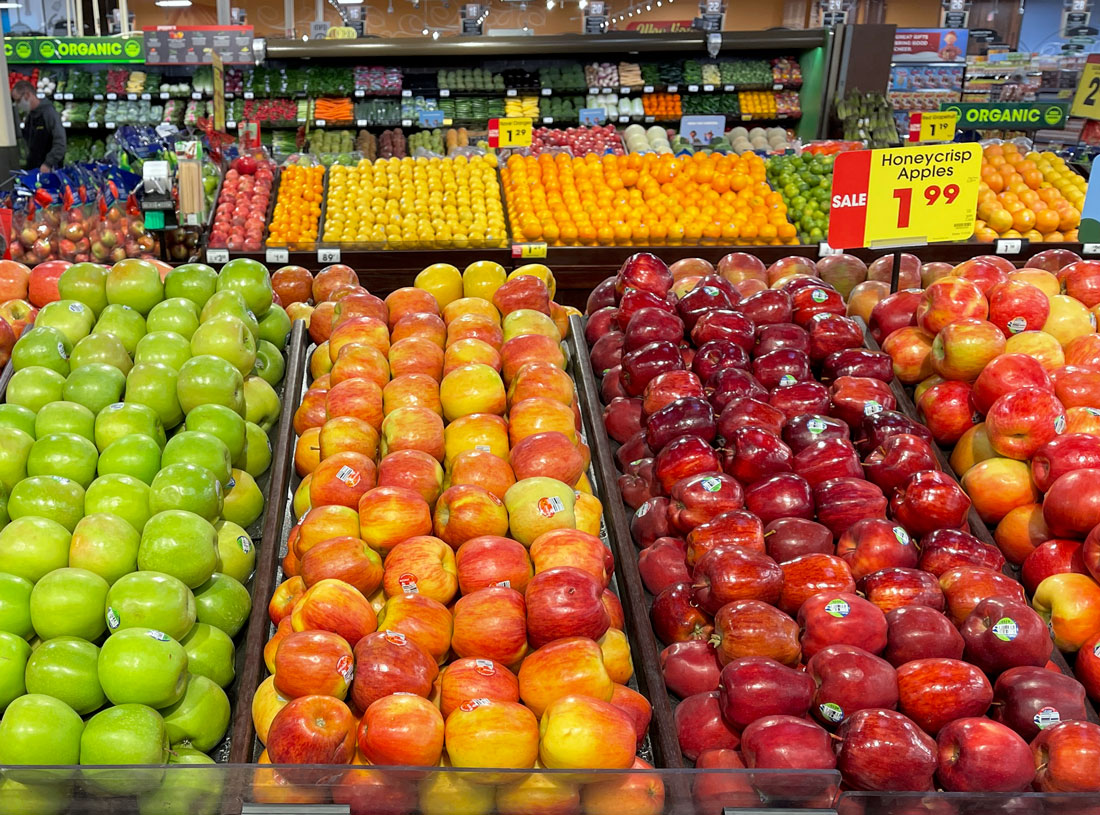
- Studies have shown that people tend to shop until they fill their cart. The larger the cart, the more they tend to buy. If you shop using a list, you won’t have a problem with this.
- Check your receipt to make sure that you actually got sale items for the sale price. Some stores are not quick about taking down outdated sale promotions, so you may buy an item thinking it is on sale but it will scan at the regular price. This can cost you $5-$10 extra at checkout.
- When shopping online, beware of the “allow substitutes” checkbox, because this means that the store can replace something you have ordered with a more expensive item.
- Use coupons only for basics and brands that you use all the time so you know when they are a good deal.
- Many supermarkets run weekly ads from Wednesday to the following Tuesday. Sale items can sell out quickly, so it’s a good idea to check out the ads on Wednesday morning and grab those items right away.
- Some stores provide rewards discounts that provide substantial savings if used wisely.
- Some gift cards are discounted, so you can save money by buying a gift card and using it to purchase items.
- At Whole Foods, Prime members now get 10 percent off of groceries, and there are other special yellow sticker deals for Prime members that aren’t offered to other shoppers.
Eliminate Food Waste
About 931 million tons of food is wasted annually, 61 percent of that in individual households. Less than half of that – 26 percent – is wasted by food services, and just 13 percent by retail stores. This is an area where we as individuals have a great deal of control, as cutting down on household food waste can make a huge difference in fighting both inflation and climate change. Between 8-10 percent of global carbon emissions are linked to unconsumed wasted produce. This is about the same as the emissions from road transportation. About 17 percent of global food production is wasted, a 2021 United Nations report said.
Food waste places an enormous burden on waste management systems, increases food insecurity and is a major contributor to pollution and loss of tropical forests to farming. After the initial disruptive period at the beginning of the pandemic when food waste increased, consumers became more organized at planning menus, developing cooking skills and finding ways to use leftovers. As a result, food waste declined. Forests are cleared, fuel is burned and packaging is produced to produce food that ends up tossed in landfills. Some experts believe that the single most effective thing individuals can do to help solve the climate crisis is to reduce food waste.
Limiting food waste also is an important factor in achieving other sustainable development goals – responsible consumption, responsible production and sustainable agriculture. Agriculture accounts for about 70 percent of global water use and 30 percent of greenhouse gas emissions.
Since the average family of four in the United States tosses out about $1,800 worth of food per year, reducing food waste is one of the most effective strategies to blunt the effects of inflation.
Reducing food waste and becoming wiser consumers of food also are ways to solve the obesity health crisis, which has tripled since 1975 and contributes to the severity of major diseases such as heart disease, cancer and COVID-19.
Food loss and waste cost the global economy $936 billion a year.
At the individual household level, eliminating food waste means adopting a healthier diet, only buying what you need and storing food wisely. Here are some ways to do that:
- It’s hard not to overbuy produce. When you do overbuy, a good strategy is to make small batches of refrigerator pickles or hot dog relish from cucumbers, peppers and onions to use in sandwiches, coleslaw or salad. You also can freeze surplus vegetables to toss into soups later.
- Freeze leftover rice, pasta, meat, or vegetables in freezer bags to use in future recipes. Freeze leftover lasagna, enchiladas and other similar items in one-person portions to take to work for lunch or in a size that works for an extra meal for your family. Freeze even small amounts of leftovers and then pull them out of the freezer on busy nights and create a fun “sampler” dinner where everyone gets to taste a small amount of a variety of entrees.
- Understand the difference between ‘use by’ and ‘best before’. ‘Use by’ tells you the date up to which food is safe to be eaten, while ‘best before’ indicates that food’s quality is best before that date, but it is still safe to eat after the date.
- Buy local produce when possible to help fight pollution and extra costs by reducing delivery distances.
- Eat at least one non-meat based meal a week to cut both your food budget and emissions associated with livestock farming. Cut down on portion sizes to reduce beef and dairy consumption. Raising cows for milk or beef takes a lot of natural resources, and beef often is grazed on land that was once tropical forest but has been deforested. Beef production is a top contributor to carbon emissions that exacerbate climate change.
- Share excess food with friends and family.
President Carter warned in 1978 that inflation is like one person standing up at a football game. The people behind stand up so that they can see better, and this sets off a domino effect with other people standing up so that they can see until everyone is standing and no one can see. If each person makes the individual decision to sit down again, everyone can see again.
If each of us makes simple daily food decisions to curb inflation, eat in healthy ways, and reduce food waste, our collective good habits can have a domino effect on the economy, the environment and the burden on and cost of our health care system as well as on our own quality of life and wallet.
Check out these related items

Enough Stuff App
The Enough Stuff inventory app for iOS helps you keep track of how much you have of items so you don't buy more of them than you need.

Home Gnome App
The iOS app that helps you keep track of what tasks you need to do and when to do them to maintain your home well all year long.

Green Thumbometer App
The all-in-one iOS app that's a gardening calendar, gardening journal, gardening to-do list and source of gardening information.

Creating an Easy Cooking System
Creating a simple, versatile cooking system can enable you to serve delicious meals at home even on days when you are swamped.
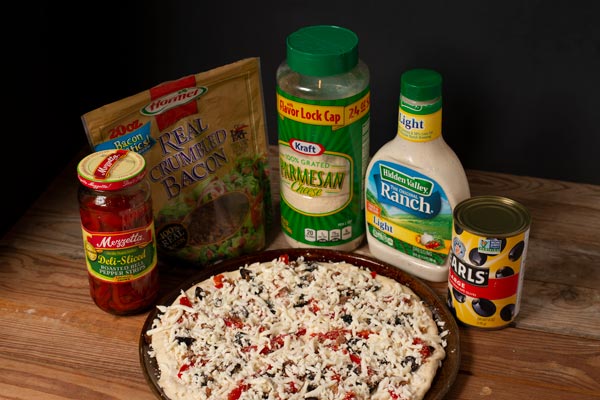
Store What You Eat Guidelines
The pandemic has been a major wake-up call about planning, home storage and preparation for crises. Here are some guidelines.
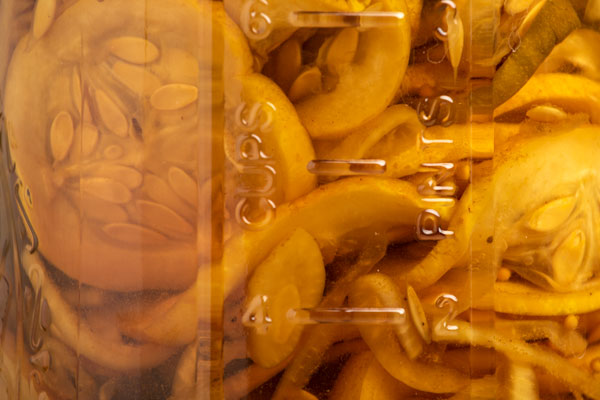
A World of Pickles
Pickling is one of the most common ways of food preservation the world over. See our recipes and information about pickles.

Beyond Recipes
Beyond the world of recipe-based cooking is an adventurous, affordable, easy way of cooking that combines the basics with variety.
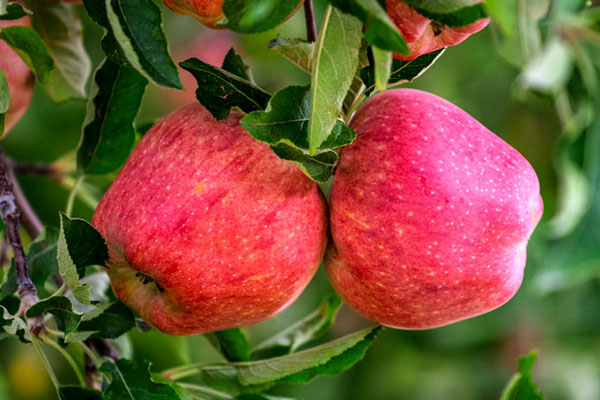
Eating Food in Season
Eating locally grown food in season is a great strategy for weight loss, good health, saving money and protecting the environment.
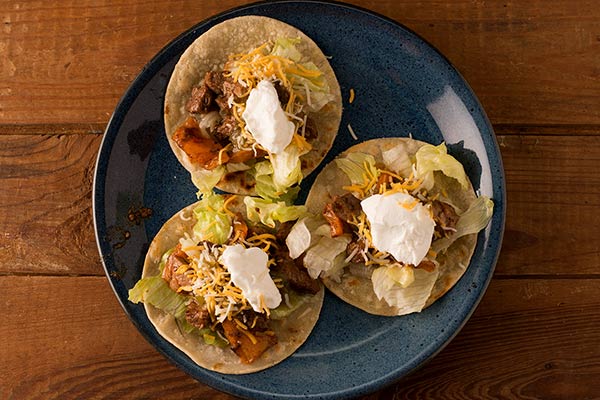
Favorite Sauces for Latin Dishes
Some of the best Latin foods can be made with easy commercial or homemade sauces that work in a variety of dishes.
